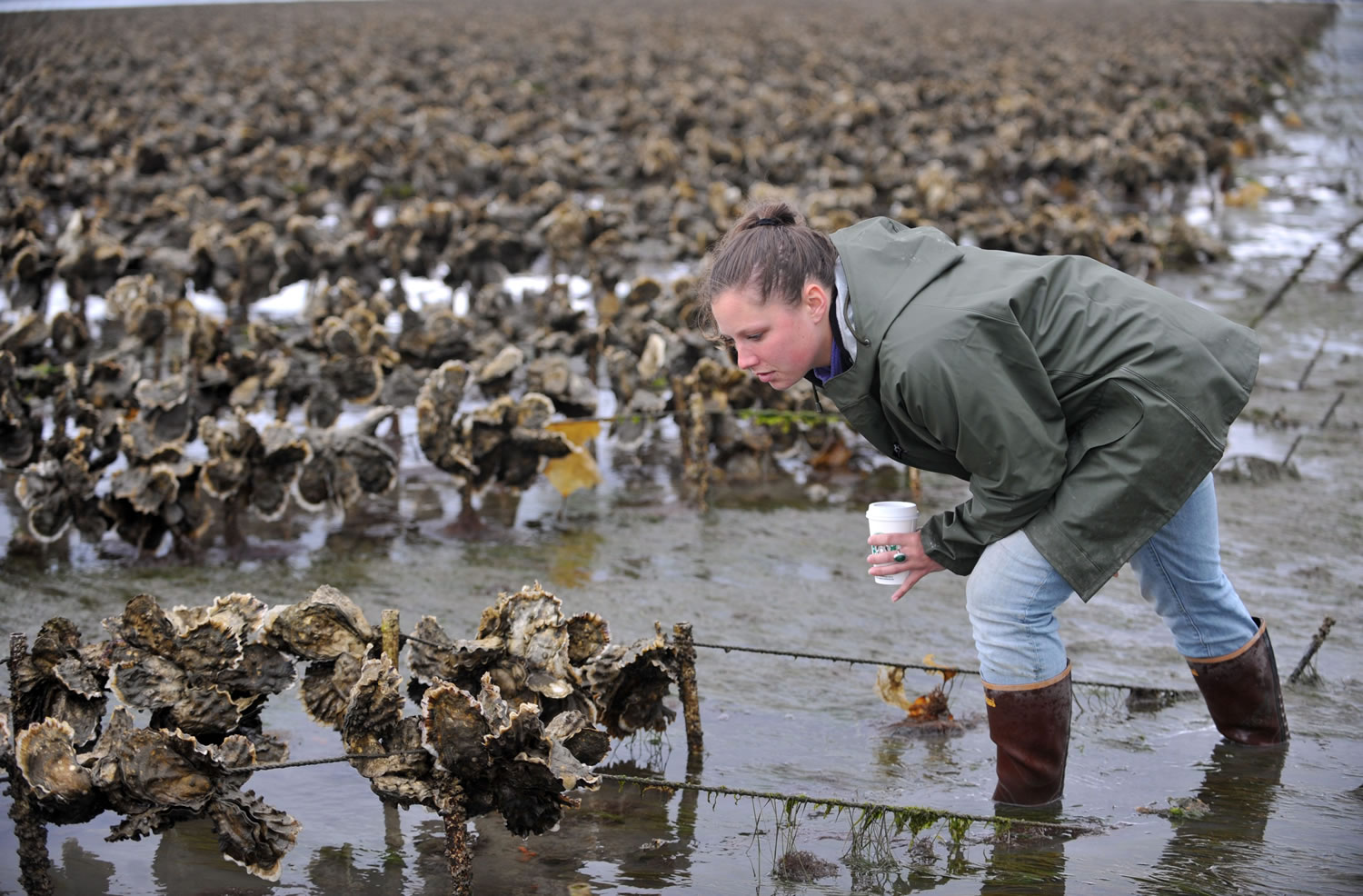Mount Vernon — State officials have big goals this year when it comes to increasing shellfish harvest areas, and Samish Bay can play a big part in reaching those goals.
Puget Sound Partnership and the Washington Shellfish Initiative, which Gov. Jay Inslee launched into a second phase Friday, want to have 10,800 more acres in Puget Sound open for shellfish harvesting by 2020 than there was in 2007.
Since 2007, the state has opened about 3,800 acres. This year’s goal is to bring that to about 6,400 acres, according to the governor’s office.
Because about 4,000 acres of prime harvest area in Samish Bay are often out of play due to water-quality issues, fixing the problems in that area is a high priority.
“To meet the Puget Sound Partnership’s goal of reopening 10,800 acres of shellfish beds, we need the Samish and we need to fix it quickly,” Inslee said during a video meeting on Periscope.
The Puget Sound Partnership is a state agency tasked with restoring and protecting Puget Sound.
The initiative is a partnership among federal, tribal, industry and nonprofit groups interested in protecting the state’s shellfish resources. The initiative’s second phase is simply a recommitment to protecting shellfish resources, according to a news release.
Shellfish are important to tribal groups as well as recreational and commercial harvesters.
The state’s commercial shellfish growers, including Taylor Shellfish Farms and Blau Oyster Co. in Samish Bay, employed about 2,700 people and contributed $184 million to the state’s economy in 2010, according to the governor’s office.
“The ability to harvest healthy shellfish is a significant part of our economy, our culture, and our responsibility to uphold tribal treaty rights,” Puget Sound Partnership Executive Director Sheida Sahandy said in a news release. “To safeguard this resource for future generations, we must work together to fix known problems such as failing septic systems, and work hand in hand with our agricultural partners to prevent polluted runoff from reaching our waterways.”
Through the Clean Samish Initiative, about 20 agencies are working toward those goals in the Samish watershed, a portion of which was downgraded by the state Department of Health in 2011 due to fecal coliform pollution.
Because of the downgrade, the bay is often closed to harvest during heavy rain events. With an upgrade, harvest would only be closed when pollution reaches unsafe levels.
While the bay has yet to be upgraded, bacteria levels are down significantly from levels seen between 2008 and 2010, according to state and county officials.
Dairy farmers and shellfish growers agree progress is being made.
“It’s good to see government working. It’s good to be part of a team,” longtime dairy farmer Oscar Lagerlund said at a recent meeting with Inslee. “You can’t win unless everyone suits up. We found that team in Skagit County.”
About a year ago, Lagerlund participated in the Clean Samish Initiative’s three-day planning session for how to tackle pollution in the watershed during 90 days of spring, which is known as the wet season.
Stew Henderson, with the governor’s Results Washington, said Lagerlund’s honesty during those three days helped bring representatives from all sides of the issue together.
“When he said ‘My grandfather did this (dairy farming), my father did this, I’m doing it and my son is doing it, but my grandson might not because of all these regulations,’ there was sort of a stunned silence in the room,” Henderson said.
He and Lagerlund said since then, there have been improvements in the relationships between landowners and officials.
“Those relationships aren’t always peachy-keen … Some of the most challenging ones have been between state agencies and farmers who are being regulated,” Henderson said.
When the Clean Samish Initiative formed in 2009, some assumed dairy farms in the watershed were to blame for the pollution. While improvements were needed on some farms, they were not the sole offenders, Lagerlund said.
Skagit County Water Quality Analyst Rick Haley said the variety of pollution sources in the Samish is a challenge.
Livestock with access to streams, manure used as fertilizer during the wet season, failing or overloaded septic systems, dog poop in a backyard, and all types of wildlife can contribute to the problem.
The county recognizes that, Haley said, and is not going after livestock owners only. Residents and government agencies have the most control over human sources of pollution, so that’s where some attention has been placed.
Over the past year, more landowners have agreed to voluntary dye tests on their septic systems, which has helped the county locate several failures.



